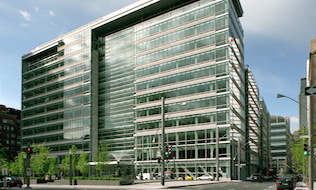
The Caisse de dépôt et placement du Québec generated a two per cent return in the first half of the year ended June 30, 2016, its strongest half-year return since 2010.
“This is a reasonable return,” Michael Sabia, the pension fund’s president and chief executive officer, said in a conference call on Friday morning. “This being said, this performance is way beyond the reference index with a value added of $1.6 billion.”
He said it’s the fund’s best half-year performance, in terms of value added, since 2010, noting it reflects Caisse’s strategy in a context of great uncertainty in the markets. “We are attempting to try to get to the bases rather than to try for the home run.”
At June 30, 2016, clients’ net assets totalled $254.9 billion, up $6.8 billion from $248 billion at December 31, 2015. This growth is attributable to net investment results of $4.8 billion, in addition to net deposits of $2 billion.
“Weak economic growth does not translate automatically into an as weak environment for investment, short term. But over mid term and long term, we believe this period of low returns could last … because we have reached, in our opinion, the limits of what monetary authorities can do to stimulate markets,” said Sabia.
“Secondly, the asset prices are already high and in a context of weak growth, we fail to see how these prices can grow even more and stay at these high levels. And then also, the growth of indebtedness at all levels is drawing to a close. This indebtedness has played an extremely important role for the markets, for consumption, and this is no longer sustainable.”
Read: Caisse’s 2015 return slides to 9% amid volatility
Over the past six months, Caisse’s fixed-income assets benefited from the further decline in yields, generating a return of 3.8 per cent and net investment results of $3.1 billion. In real assets, its real estate and infrastructure portfolios delivered a 2.5 per cent return with net investment results of $1 billion. Equity generated a 1.4 per cent return with net investment results of $1.7 billion.
According to Caisse, these results reflect a stronger Canadian market, but also the weaker performance of global markets compared to previous years.
“At the Caisse, we see the global economy progressing, but with difficulty,” says Sabia. “This economy is bogging down … but what is more important is a number of possible alternative scenarios, and this is what uncertainty is all about. There are many factors which will determine the road that the global economy is going to take.
“There’s also the uncertainty created by the Brexit in Europe; the uncertainty of the financial system in China, especially credit-wise; there’s also the reaction and the rise of protectionism; and the capacity of developed countries to improve their level of productivity, which at 0.16 per cent remains way below the average between the year 2000 and 2010. There are a lot of question marks out there.”
Sabia noted that Caisse is very selective and will continue to choose its transactions to protect its capital. “We’re going to stick with our game plan and invest in quality assets that are anchored in the real economy,” he said. “We’ll concentrate on our own operational knowledge. And, of course, we’ll seek out the best partners, which is even more important in growth markets.”
Read: Caisse welcomes six public pensions from Quebec City
Caisse noted a number of investment highlights for the first six months of the year, including:
- CDPQ Infra, Caisse’s new subsidiary, presented the Réseau électrique métropolitain, a public transportation project valued at $5.5 billion, for which Caisse committed to invest $3 billion.
Read: Caisse to commit $3 billion for proposed light-rail transit in Greater Montréal
- International investments, including the acquisition of a 44 per cent interest in Greenstone, an Australian insurance distributor, and a EUR 200-million investment in Eurofins, a global food, environment and pharmaceutical products testing organization. In India, Caisse will invest US$150 million in renewable energy projects. It also opened offices in Mexico City and New Delhi.
- Quebec-based transactions in the technology and innovation sector included investments in Moment Factory, AddÉnergie, Stingray, Felix & Paul Studios, Lumenpulse and Triotech. It also inaugurated Espace CDPQ, an investment and development hub, intended for Québec’s entrepreneurs.
Read: Caisse invests in Montreal-based virtual reality studio
Read: Caisse introduces global investment hub for Quebec businesses
- In real estate, Ivanhoé Cambridge carried out $3.4 billion of acquisitions, including several in a few key markets in the United States.
